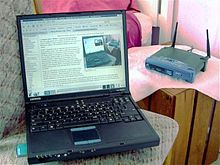General edit In a general sense, wireless networks offer a vast variety of uses by both business and home users. "Now, the industry accepts a handful of different wireless technologies. Each wireless technology is defined by a standard that describes unique functions at both the Physical and the Data Link layers of the OSI model. These standards differ in their specified signaling methods, geographic ranges, and frequency usages, among other things. Such differences can make certain technologies better suited to home networks and others better suited to network larger organizations." Performance edit Each standard varies in geographical range, thus making one standard more ideal than the next depending on what it is one is trying to accomplish with a wireless network. The performance of wireless networks satisfies a variety of applications such as voice and video. The use of this technology also gives room for expansions, such as from 2G to 3G and, 4G and 5G technologies, whi...

Comments
Post a Comment